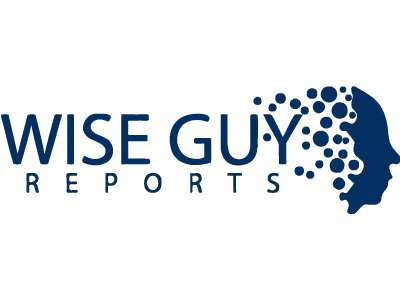Chemicals Industry Today
Nylon 6 Fibre Market Poised for Steady Expansion, Anticipated CAGR of 2.83% Over the Next Decade
The Nylon 6 Fibre Market refers to the global industry engaged in the production, distribution, and application of Nylon 6 fibres, a type of synthetic polymer fibre derived from caprolactam. Nylon 6 is a polyamide known for its high tensile strength, elasticity, abrasion resistance, chemical resistance, and durability, making it one of the most widely used synthetic fibres in both consumer and industrial applications.
The Nylon 6 Fibre Market CAGR (growth rate) is expected to be around 2.83% during the forecast period (2025 - 2032).
Drivers
Strong Demand from Textile Industry
Nylon 6 fibre is widely used in apparel, hosiery, swimwear, sportswear, and carpets due to its strength, elasticity, and abrasion resistance. Rising demand for performance-based and fashionable textiles supports market growth.
Growing Use in Industrial Applications
Beyond textiles, Nylon 6 fibre finds applications in tire cords, ropes, nets, and technical fabrics, driven by its high tensile strength and durability.
Expansion in Automotive and Transportation
The automotive sector uses Nylon 6 fibre in seat belts, airbags, upholstery, and carpets. Rising vehicle production and lightweight material demand fuel its adoption.
Shift Toward Durable and Lightweight Materials
Consumers and industries prefer lightweight, weather-resistant, and easy-to-maintain fibres, making Nylon 6 fibre a favorable alternative to natural fibres.
For In depth Information Get Free Sample Copy of this Report @
https://www.wiseguyreports.com/sample-request?id=647979
Nylon 6 Fibre Market Companies Are:
Teijin Limited, Nexis Fibers, BASF, Radici Group, China Petrochemical Corporation, Invista, Nylon Corporation, Toray Industries, Ascend Performance Materials, Hengfeng Chemical, Fibrant, Kraton Corporation, Haidian Chemical, DSM, Mitsubishi Chemical
Restraints
Fluctuating Raw Material Prices
Nylon 6 fibre is derived from caprolactam (a petrochemical). Volatility in crude oil prices directly affects production costs and pricing stability.
Competition from Alternative Fibres
Polyester and polypropylene fibres are cheaper alternatives, offering strong competition in both textiles and industrial applications.
Environmental and Sustainability Concerns
Being petroleum-based, Nylon 6 fibre faces criticism due to non-biodegradability and its carbon footprint, limiting adoption in sustainable textile initiatives.
Nylon 6 Fibre Market Segmentation Insights
Nylon 6 Fibre Market Application Outlook
· Textiles
· Automotive
· Consumer Goods
· Aerospace
· Industrial
Nylon 6 Fibre Market Product Type Outlook
· Filament
· Staple Fibre
· Microfibres
· Yarn
Nylon 6 Fibre Market End Use Outlook
· Apparel
· Home Furnishings
· Footwear
· Geotextiles
Nylon 6 Fibre Market Distribution Channel Outlook
· Direct Sales
· Online Retail
· Wholesale
· Distributors
Opportunities
Growth in Sustainable and Recycled Nylon 6
Increasing investments in recycled Nylon 6 (Econyl and similar fibres) create new opportunities for eco-conscious applications in fashion, sportswear, and interiors.
Expansion in Technical Textiles
Growing use in geotextiles, protective clothing, filtration fabrics, and medical textiles expands the scope of Nylon 6 fibre beyond conventional applications.
Rising Demand in Asia-Pacific
Rapid urbanization, industrialization, and increasing disposable incomes in China, India, and Southeast Asia are driving both apparel and industrial demand for Nylon 6 fibre.
Integration in Smart Textiles and Advanced Composites
Nylon 6 fibre’s compatibility with nanotechnology, coatings, and functional finishes opens pathways in high-value smart textile and composite applications.
Purchase Full Report :
https://www.wiseguyreports.com/checkout?currency=one_user-USD&report_id=647979
Challenges
Sustainability Pressure and Regulatory Compliance
Global pressure to reduce plastic pollution and stringent regulations on synthetic fibres challenge the long-term outlook for Nylon 6.
High Energy Consumption in Production
The manufacturing of Nylon 6 fibre is energy-intensive, impacting profitability and carbon emissions targets.
Supply Chain Disruptions
Geopolitical tensions, raw material shortages, and logistics bottlenecks affect steady supply, especially in emerging markets.
Price Sensitivity in End-Use Industries
Cost fluctuations limit adoption in price-sensitive markets such as low-cost apparel and commodity textiles, where cheaper substitutes dominate.
Browse Related Report:
Timber Pallet Market |Japan |German |French |Korean |China |Spanish |
Triclosan (Tcs) Market |Japan |German |French |Korean |China |Spanish |
Tamarind Polysaccharide Gum Market |Japan |German |French |Korean |China |Spanish |
Sulfate Process Titanium Dioxide Market |Japan |German |French |Korean |China |Spanish |
Solid Snow Melting Agent Market |Japan |German |French |Korean |China |Spanish |
Streptomycin Sulfate Api Market |Japan |German |French |Korean |China |Spanish |
Sulfur Concrete Market |Japan |German |French |Korean |China |Spanish |
You May Also Like This Regional Repots:
ナイロン6繊維市場 | Markt für Nylon-6-Fasern | Marché des fibres de nylon 6 | 나일론 6 섬유 시장尼龙 | 6纤维市场 | Mercado de fibra de nailon 6 |
Share on Social Media



Other Industry News
Ready to start publishing
Sign Up today!








